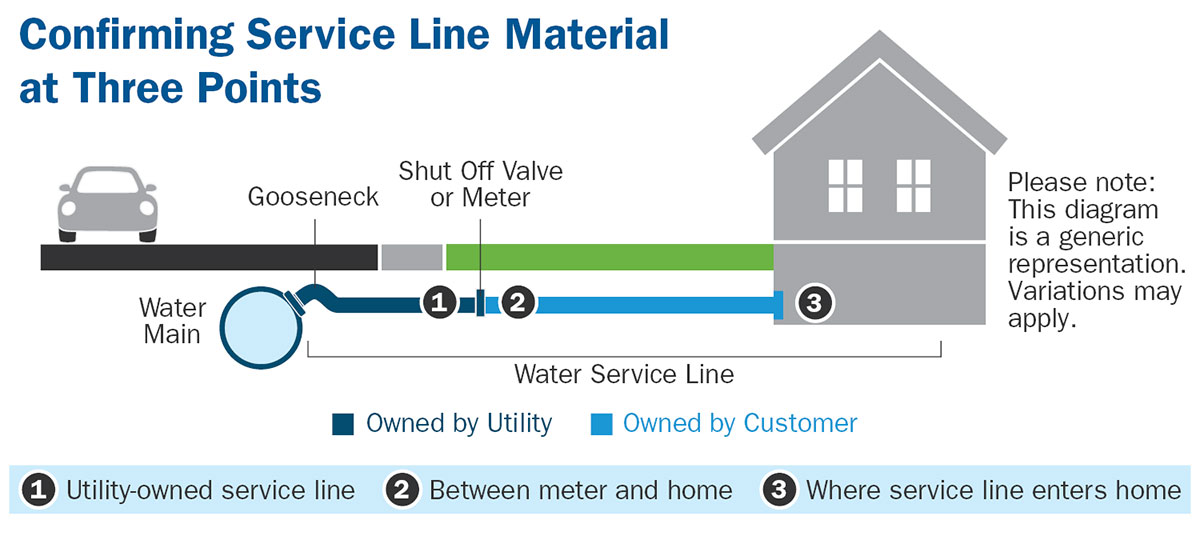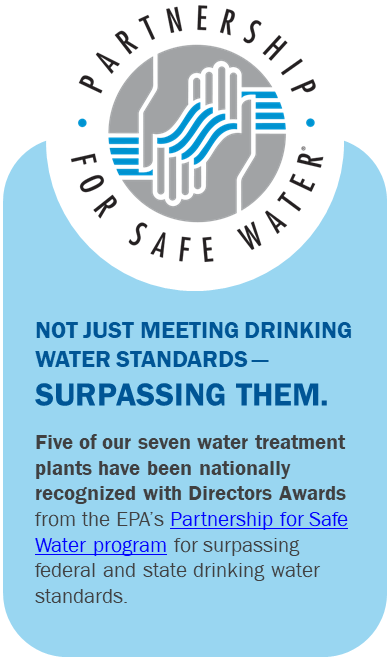|
|
|
Lead Service Line Replacement Program
We are accelerating the pace and replacing thousands of lead service lines each year. We estimate to accomplish the overall effort prior to the 2031 deadline as required by New Jeresy law.
This effort is complicated by the fact that property owners — not New Jersey American Water — own a portion of these water service lines, much like a homeowner owns the driveway that connects to the public street. Details about the material of an individual property’s service line have been largely unknown and spread across a variety of sources. However, we have developed a public facing inventory showing the location of known in our service area using property records, water quality tests and visual inspection of service lines.
We are using this inventory and a sophisticated priorization model, both of which are regularly being updated with new information, to guide decisions about where to look for lead service lines and the timing of replacing these lines. Annually, we will use the model to identify proposed work areas for the following year. The model determines replacement areas based on several factors, including:
- The likelihood that lead/galvanized service lines are in a given area.
- How many properties in a given area are identified as either having or likely to have lead/galvanized service lines.
- The number of critical facilities (e.g., child care facilities, schools) identified as likely to have lead/galvanized service lines.
- The potential to coordinate replacement work with other efforts to minimize or avoid multiple disruptions to the same community.
- Census information and other studies that can be used to identify areas where the population is at higher risk for negative health consequences from potential lead exposure (e.g. children and expectant families, median income below the federal poverty level).
In fact, over the last year, the company has replaced over 1,000 lead and galvanized service lines in the Hillside, Linden, and other areas in our central region, under a planned replacement program funded in part by the NJ Infrastructure Bank. This program provides low cost loans and principal forgiveness funds that help the company accelerate lead service line replacements in disadvantaged communities that have a high proportion of older infrastructure.
More information on our prioritization plan can be found here.
Our NJDEP Progress Report Forms can be found here.
Optimizing Efficiency and Reducing Costs Through Predictive Modeling
New Jersey American Water was approved by the New Jersey Department of Environmental Protection (NJDEP) to use predictive modeling as a tool to help continue to build our lead service line material inventory. Using this tool will help reduce the cost of the overall program by reducing the number of in-person inspections across our service areas.

Check out common questions below to learn more about this effort:
Predictive Modeling
Results from Lead Sampling
The results from samples collected in your water system are included in your annual water quality report (also known as the Consumer Confidence Report) as well as in the Typical Water Quality Summary, both of which can be found on our Water Quality Reports page.
Because service lines, faucet fixtures, household pipes, and/or solder can contribute significantly to the lead and copper levels in tap water, we ask our customers to collect samples in their homes. These samples are collected on a routine basis (systems begin by monitoring once every six months with reductions in sampling possible that allow for monitoring once every three years) at homes that are considered vulnerable based on when they were constructed and the materials used. We do this monitoring according to the requirements of the Lead and Copper Rule and use the results to confirm that our corrosion control strategy is operating as intended.
Water Quality Reports
|
Lead and Drinking Water Homepage | Inventory Map | Assess & Reduce Exposure | FAQs | Pipe Material Information | More Resources | Contact Us

